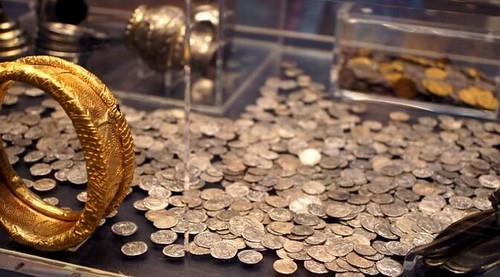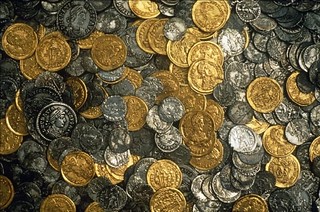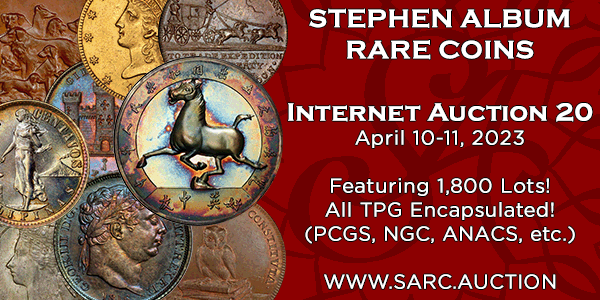
PREV ARTICLE
NEXT ARTICLE
FULL ISSUE
PREV FULL ISSUE
COINS FROM THE HOXNE TREASURELeon Saryan passed along this article about the wonderful 1992 find of the Hoxne Treasure. Thank you. -Editor When Eric Lawes set off for a field in Hoxne village, Suffolk on November 16, 1992, it wasn't on a treasure hunt. The metal detector he'd received as a retirement gift was meant to find a hammer lost on the farmland. But the detector picked up a strong signal in the earth, leading Lawes to start digging, and it quickly became apparent that he had indeed found treasure. After bringing up only a few shovelfuls of silver spoons and gold coins, Lawes quickly retreated and called the police and the local archaeological society. The very next day, as covertly as possible, the archaeologists excavated a chunk of earth with the treasure still contained within. This way, they could remove the objects under laboratory conditions, which would help determine the age and storage method of the cache. By the time everything had been removed from the dirt, the archaeologists had nearly 60 pounds of gold and silver objects, including 15,234 Roman coins, dozens of silver spoons and 200 gold objects.
Lawes received £1.75 million from the British government for finding the gold and leaving it intact, which he split with the farmer on whose land the hoard was uncovered (he also eventually found the hammer, which later went on exhibit). As for archaeologists, they had their own reward: of the 40 treasure hoards discovered in Britain, the Hoxne Hoard was In the 25 years since the unearthing of the Hoxne hoard, researchers have used the objects to learn more about one of Britain's most turbulent periods: the island's separation from the Roman Empire in 410 A.D.
To read the complete article, see:
Wayne Homren, Editor The Numismatic Bibliomania Society is a non-profit organization promoting numismatic literature. See our web site at coinbooks.org. To submit items for publication in The E-Sylum, write to the Editor at this address: whomren@gmail.com To subscribe go to: https://my.binhost.com/lists/listinfo/esylum All Rights Reserved. NBS Home Page Contact the NBS webmaster 
|


